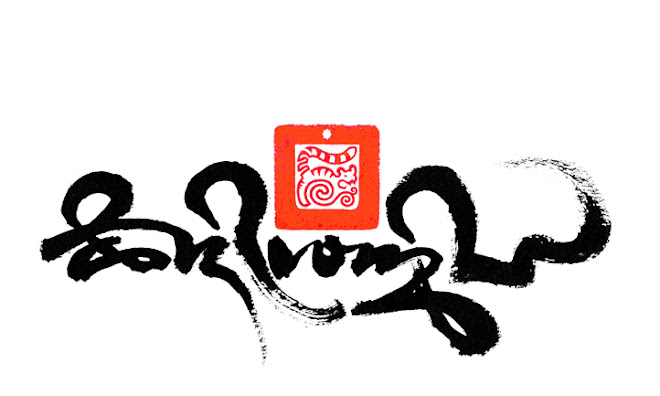
In the beginning there was the word.... It is of course impossible to describe emptiness in a word or to portray emptiness in a calligraphy art piece, other than not painting anything what so ever or just leaving a 'void'.
At the start of just about every Tibetan Sadhana prayer says: "from within emptiness....." (as the text spells out above). Thus the development stage of the practice begins, born out of emptiness, to mind creates the visualization, the text chanted explains and guides step by step to a complete embodiment of body speech and mind, inseparable from the practice 'Yidam' deity, in meditation and mantra, only to dissolve back into emptiness from where it was born, and the practice is completed.

The above calligraphy of the mantra of The Prajnä Päramitä Sutra or more commonly known as the Heart Sutra, sometimes named the Gaté mantra in reference to how the mantra of the Heart Sutra is pronounced:
tayata om gaté gaté para gaté para sam gaté bodhi swa ha.

The calligraphy of the Gaté mantra is painted in the Dru-tsa script style, the tails of the letters extend pointing to the empty center of the paper from where the mantra seems to emanate from.

This is the second rendition of the Gaté mantra that Tashi has created, both based on the same design of the mantra spinning off a central axis, the first piece was sold before a quality photograph was taken of the art piece, then due to popular requests, a second calligraphy was painted and photographed to produce high quality giclée prints. these are available in two sizes of 60x42cm near to actual size of the original and half the size at 42x30cm.
For more details on prints in general and how to place an order, please follow the link here.



